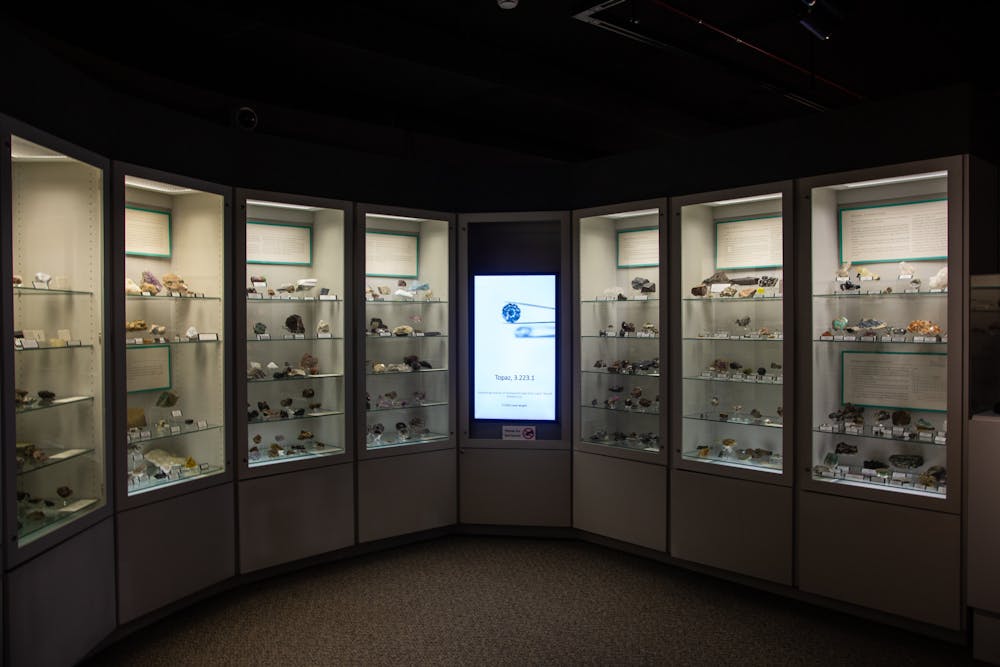The McKissick Museum, located at the east end of the Horseshoe by Davis College, is dedicated to preserving and showcasing Southern history and heritage. The museum takes care in preserving the history of the region by keeping the art of the past alive and seen. Yet, somehow within the USC community, the museum is overlooked. Most of their art shows the regional culture and the emotions crafted within the pieces and withstands a connection with contemporary life while demonstrating the past. By taking a few minutes to explore, students and visitors can step into the world of folk art and learn from devoted artists.
Most of these collections and showcases are made possible by the inspired museum staff, who work to bring attention to the museum and the art inside, including Folklife Program Director, Amanda Malloy. After earning her graduate degree in Southern studies at the University of Mississippi and working at Mississippi Arts Commission and the Historic Home of William Faulkner, she came to work at McKissick. Her main job with the museum is to create outreach events and do fieldwork when gathering interviews or film for the archives.
One artist that Malloy has recently worked with is Peggie Hartwell, who had a current collection on display within the museum early in 2024. Hartwell, a South Carolina native and quiltmaker, creates stories on a canvas of cotton using mixed fabrics and variations of stitching. Some of the pieces in McKissick are a part of her "Ode to" series where Hartwell pays homage to many different important figures in life through portrait quilts, some of these figures being quoted as Maya Angelou and her grandparents. These quilts are a performance of color and medium representing Hartwell's unique childhood in rural South Carolina. Her heritage lies in the rural areas where her family grew up and shared their traditions with her. She's made these familial traditions her own while appreciating their origin, as seen in her artist statement, "Most importantly, it gives me the opportunity to honor my family's great tradition of oral storytelling through my own visual quilted-expressions." By using art and the found materials, Hartwell is able to tell a story similar to other folk artists who grew up learning to do the same.
Similar to Hartwell, lots of artists in South Carolina became one with their culture and the land they grew up on by making art from organic material. One example is the permanent collection in Mckissick displaying sweetgrass baskets that have been handwoven by many South Carolinians over time. Originating from West African slaves who weaved them for rice production, these baskets later turned into precious pieces of art and displays of culture. This tradition has been passed down for years as an effort to keep their heritage alive. Sweetgrass baskets are a part of the livelihood of the Gullah Geechee culture, with which Malloy works closely.
When speaking on the impact of sweetgrass baskets, Malloy said, “Sweet grass is something that's harder and harder to get access to. This isn't just something from the past, this is something that artists—contemporary artists—are facing daily, young artists and people who are basing their livelihood off of contemporary craft.”
Between classes and mounting assignments, it is difficult for a student to find time to wander around a museum for a couple of hours to absorb the history and find how it impacts their lives. But by taking time out of your schedule, you can immerse yourself in the history of the school and the land around it. For many students, this can mean gaining a better understanding of the heritage of the local region.
During the interview, Malloy made it a point to include how these historical and cultural art forms impact contemporary life and art even if it's not often paid attention to.
"Like trying to connect these things that feel historic and of the past to contemporary issues, that I think is the way to express their importance," Malloy said.
For students who have already taken a glance around the museum and felt a connection with the art, Malloy thinks it's easier to take a deeper dive.
"Just talk to [the artists]," Malloy said. "Just ask them about what they do and how they started doing it, and how did they learn? And I think you'll really get a lot of value out of that experience. And then hopefully, that will influence you to understand the value of the craft itself."
With multiple alternating limited exhibitions and other permanent collections, there is always a chance to see something new or revisit your favorite piece. So, if you’re ever looking to find something new or old, wander into McKissick Museum. You never know what you'll find.



